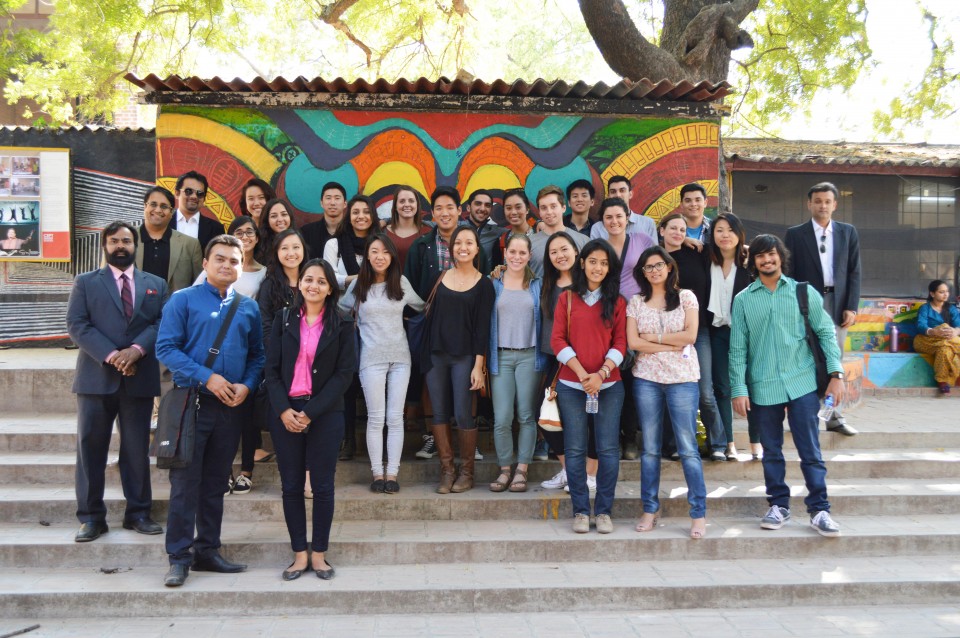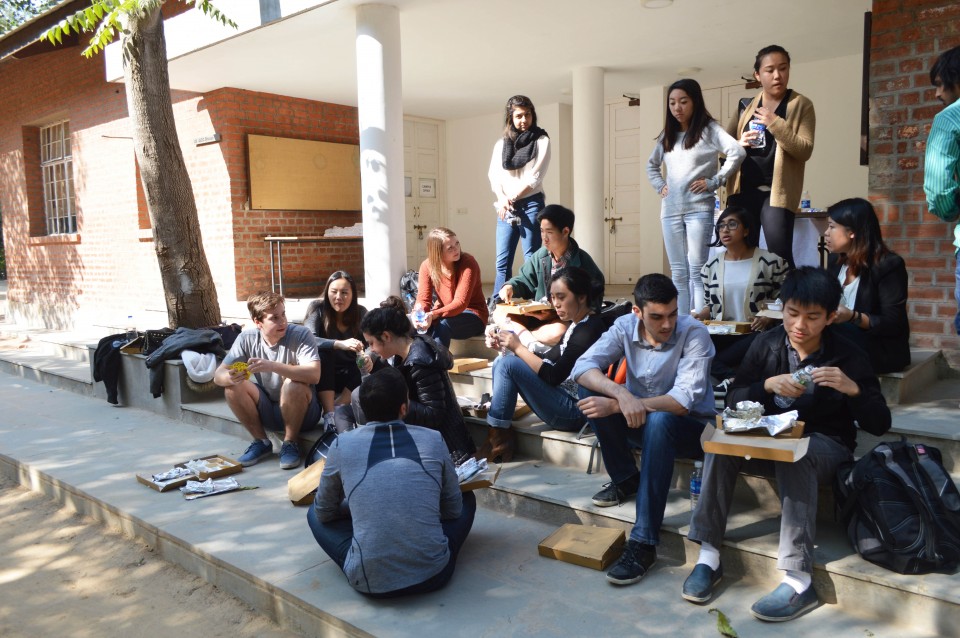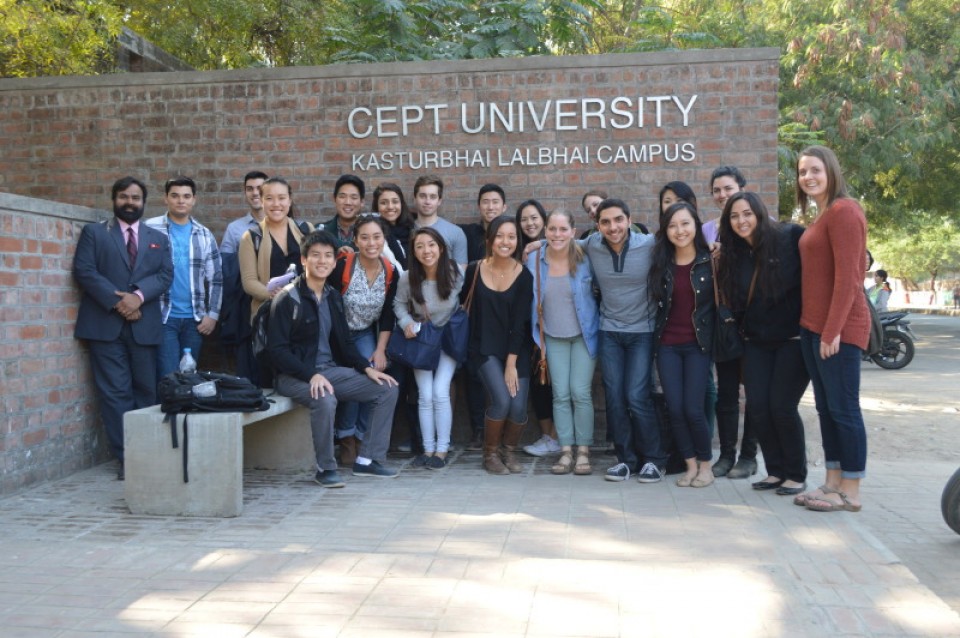It is December 28th, 2014, marking the first official day of the UGBA193i Travel Study course. Our day started off bright and early as everyone met up in the lecture room at MICA University in Ahmedabad, India at 7AM; ready for the scheduled packed day ahead. Our first destination was visiting CEPT University where we had multiple speakers present about what exactly the country of India needed in terms building India into a “smarter city”. A Smart City uses information technology to solve urban problems. Monitors and manages traffic, water levels, energy usage, security cameras, waste and communication systems in real time with sensors and cost-effective digital tools that are essentially free. Expected to save operating costs in managing the city that results in lower taxes and happier citizens. “Smart cities are not about just e-gov. They use tech to transform core systems to optimize best use of finite resources,” says Rahul Sharma of IBM India.
We were met with extremely talented bright individuals. The first speaker Dr. Bimal Patel, explained to us that specifically the definition of “smart city” for India wasn’t the same for the United States. Dr. Patel elucidated the problems of India and its major goal was to give its people their basic fundamental living rights of fresh water, energy, and overall bringing India from a developing country to a developed one. After that we were met with Ms. Jaladhi Vavaliya and Mr. Dhruv Bhavsar who worked with the Performance Assessment System (PAS) Project and explained to us the 4 pillars of building a smart city, 1) Social Infrastructure, 2) Physical Infrastructure, 3) Institutional Infrastructure (including government), and 4) Economic Infrastructure. With the four pillars instated would give us sustainability, which allows the quality of life and employment to be improved. For India, we learned there exist a huge gap in financial sustainability of municipal corporations and municipal councils. To learn more and see the statistics visit pas.org.in. One of the most intriguing intellectual dialogue that we had on our agenda was with Anuj Malotra who worked on the DIU cycling project, which was a project that implemented a geometric design to promote suitanability, by encouraging cycling and walking with the Indian people and overall community. Going along the theme of working on transportation in India. Professor Darwin had arranged for the students to visit the Bus Rapid Transit System (BRTS) Control Room to observe the work of BRTS employees. It was interesting to learn and see on a daily basis how such uniquely integrated transportation system was handled. Having taking the BART and the infamous 51B AC Transit Bus during the school year, I was in awe of how complex the systems was on the inside. I also thought it was interesting that in India they call their bus drivers, system operators, to give a more modern title to their employment name. Overall, we had a jammed packed day filled with intellectual dialogue and innovative thinking. We boarded the bus for the ride back to our dorms at MICA University around 4 pm. You could say we came back with a greater understanding of the challenges many Indians face, and keep this in mind as we reflect on what is a smart city. On the way home, Professor Darwin and the students bonded over the day’s events over dinner and many eye-opening revelations. Tomorrow, the exciting journey continues!
– Isabelle Lee





